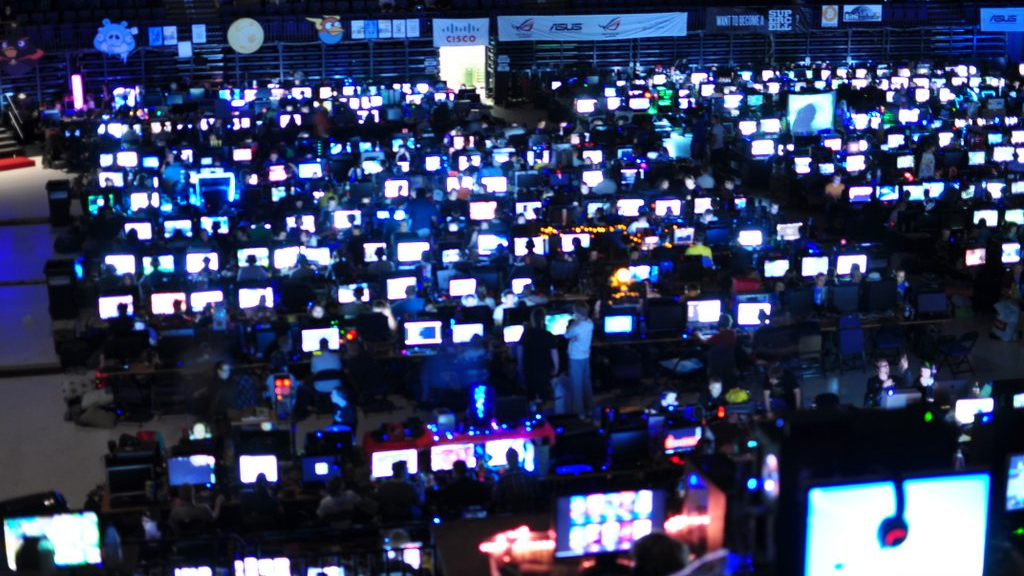From spin-off to 1 million streamers: How Twitch became a live streaming giant

Twitch recently revealed it reached a heady milestone; one million active broadcasters streaming their gaming sessions to the masses.
That's not the only number to take notice of. The site now attracts over 45 million unique visitors a month. They come to watch six million different streams and consume 13 billion minutes of internet video every month.
News of the broadcaster numbers came on the heels of a report putting Twitch in fourth place during US peak internet traffic. According to a Deep Field analytics study published in the Wall Street Journal, Twitch came in just behind web titans Netflix, Google and Apple to capture 1.8% of all US web user interest during prime time web browsing
The unprecedented popularity of game live streaming on Twitch and at large has been partially aided by the rise of eSports. What's more, the inclusion of PlayStation 4 users accounts for an additional 200,000 new Twitch streaming accounts.
The site has come a long way since its humble beginnings just three years ago. To get the inside scoop of Twitch's meteoric rise, we sat down with Matthew DiPietro, vice president of marketing, for the story of how the small Justin.tv spin-off became the official brand of video game broadcasting.
Catching lightening in a bottle

Despite Twitch's prevalence today, its creation was actually an afterthought spun out of Justin.tv, the live video streaming startup. Originally Justin.tv launched out of Y Combinator in 2007 as a place for anyone to share a live video experience from sports to music. Within a few years though, the gaming community began popping up with a vengeance. Broadcasters hooked up their consoles and gaming PCs to the web, sharing live footage over Justin.tv.
"The gamers was just emergent behavior that nobody had considered," DiPietro said. "We just noticed lots and lots of gamers come into Justin.tv and at first it was just new and interesting and novel and we weren't quite sure what to do with it."
Sign up for breaking news, reviews, opinion, top tech deals, and more.
Luckily Emmett Shear, then chief technology officer and now CEO at Twitch, was a hardcore StarCraft II player who saw the rising community as a business opportunity. Shortly after, Shear began leading the charge for more gaming oriented content.
"We started building features for gamers [and] reaching out to game broadcasters to ask them what they want, and that was all a run-away success," DiPietro explained. "At some point it became an oversized piece of the content of the site at any given time and the features became very specific for the gaming experience."
It became obvious that gaming had to be rolled out into its own brand. This spin-off would become Twitch as we know it.
Starting anew
TwitchTV, as it was called then, launched on June 6, 2011 during E3. In launching, TwitchTV ported over 3.2 million users, including combined viewers and broadcasters, from Justin.tv. Along with the new space, Twitch provided game broadcasters with tools for streaming their games.
Despite being side-loaded to a new site, TwitchTV thrived as the online network saw immense growth in only one month. By the beginning of August that year, unique monthly visitors coming to the site jumped from 3.2 million to eight million. Viewership went from 4.5 hours per user every month to one billion minutes across the site.
DiPietro explained that soon after launch, TwitchTV was out to find every game broadcaster it could, a task as these streamers were scattered across the web.

"[We] gave them a home that was entirely dedicated to the video game experience and the natural evolution of that outreach became the partner program," DiPietro expounded. "The way we envisioned it was to take the very best cream of the crop game broadcasters out in the world and give them a way to make a living at what they were doing."
The partner program launched towards the end of July 2011, which enabled some broadcasters to earn money from their live streams.
Through a mix of advertising and channel subscriptions, broadcasters could create by running their streams. This shake up would bring on a new wave of live streamers to the already established community of internet celebrities including Jayson Love, Sean "Day[9]" Plott, and Marcus "djWHEAT" Graham.

Kevin Lee was a former computing reporter at TechRadar. Kevin is now the SEO Updates Editor at IGN based in New York. He handles all of the best of tech buying guides while also dipping his hand in the entertainment and games evergreen content. Kevin has over eight years of experience in the tech and games publications with previous bylines at Polygon, PC World, and more. Outside of work, Kevin is major movie buff of cult and bad films. He also regularly plays flight & space sim and racing games. IRL he's a fan of archery, axe throwing, and board games.